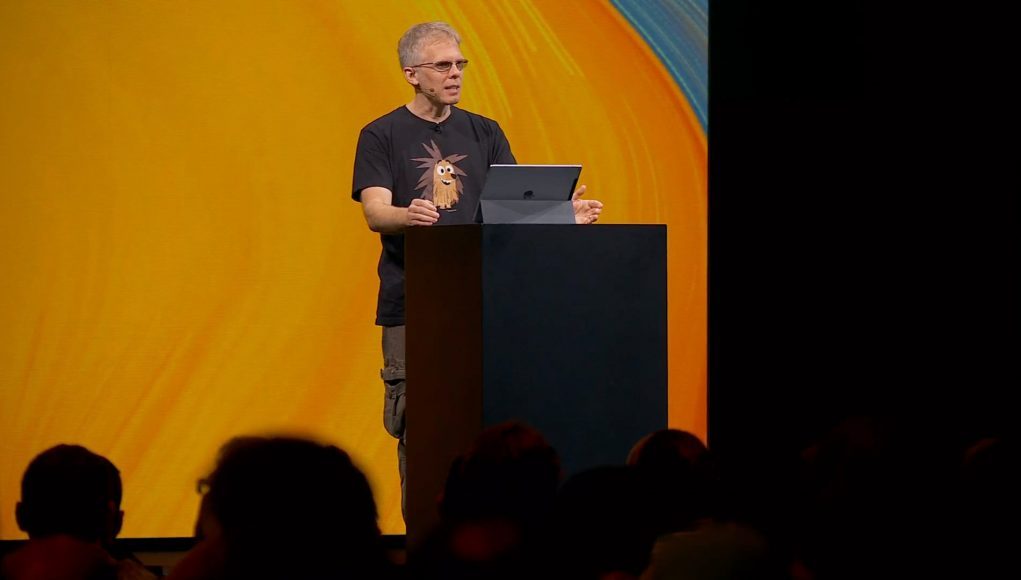John Carmack doesn’t mince words. The legendary developer, who for several years held the role of Oculus CTO but now maintains a less formal “consulting CTO” arrangement, says that his keynote presentation at last year’s Facebook Connect conference foreshadowed some of the announcements that can be expected at the event next week. But the announcements won’t come without some personal reservations as “many of the challenges and pain points for me still remain unresolved,” he says.
In anticipation of next week’s Facebook Connect (formerly Oculus Connect) conference, where Carmack will deliver another unscripted keynote, he said this week that he rewatched last year’s keynote.
“There is definitely some foreshadowing of things to be announced next week,” he said on Twitter. “But many of the challenges and pain points for me still remain unresolved.”
Likely to the chagrin of Facebook’s PR folks, Carmack over the years has managed to speak bluntly about Oculus in a way that most other employees never do. His famously unscripted keynotes often cover a wide range of topics, and his session at Oculus Connect 6 last year was no exception. In addition to talking about where he thought the company was doing well and things he was proud of, he also spoke of missed opportunities, mistakes, and things that could be done better both in hardware and software.
With the talk clocking in at one and a half hours, there’s no clear way to pin down what he might consider “foreshadowing” of announcements to pain points which he considers “unresolved.” A summary of his keynote, however, at least clues us in to what we might hear about next week.
“Friction”
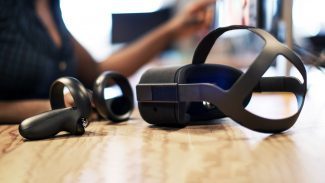
Carmack opened his presentation talking about how “friction is such a dominant force” in retention of VR users. He said the company learned through the launch of Go, Quest, and Rift S that making headsets easier to use (by making them standalone and/or including inside-out tracking) meant that users would use their headsets much more regularly than compared to Gear VR and the original Rift, both of which had greater friction in usage.
“There’s also quite a bit of headroom for us to where we say ‘we still have all these friction points with Quest, and there’s still all the quality and things we can do to improve it’,” he said. “So we can expect future headsets to continue to take those ratcheting steps up as a more and more retentive platform.”
While Rift S was an improvement over the original Rift in retention, Carmack confirmed that “Quest is by far our most retentive hardware,” solidifying the company’s primary focus on Quest.
Future Headsets
When it comes to future VR headsets, Carmack laid out what he called a “decision tree for new headsets.” Though he didn’t make any announcements, he specifically said “you can maybe infer some possible directions that things could go.”
Hardware Architectures
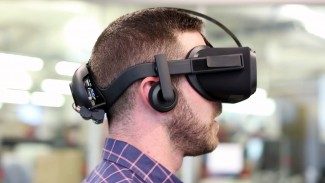
On that front he talked about several possible headset architectures like the current Quest ‘all-in-one’ standalone or a ‘split architecture’ where battery and compute is in the back of the headstrap or even in a ‘computing puck’ in your pocket, but he stressed that each of choices decisions comes with tradeoffs about performance, battery life, and manufacturability.
Displays
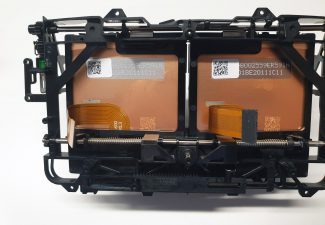
On displays, Carmack waxed about the pros and cons of LCD vs. OLED and split displays vs. single displays including differences in manufacturability, pixel density, IPD adjustment support, and display properties like contrast ratio and brightness. He pointed out that the company has flip-flopped between these options across its headsets: Rift CV1 with split OLED displays, Go with a single LCD display, Quest with split OLED displays, and Rift S with a single LCD display.
He roughly concluded that LCDs typically are less expensive, brighter, and offer greater pixel density, while OLEDs have lower latency, better contrast, but suffer from limited brightness. Carmack noted that OLEDs have the potential to be curved which could be beneficial for VR displays, though he said the ideal would be a “bowl shape” display which he hadn’t seen prototyped.
As for resolution, spoke to the idea that a VR headset ‘should be the best screen in the house’. For that, he suggested, the company should move its total display density into the 4K realm, so that (after splitting per-eye and accounting for field of view) a headset could roughly approach the quality of a 1080p TV.
Diffusers
He also talked about the potential for using diffusers, thin films which can be applied to a display to help hide the ‘screen door effect’. The company has experimented with several options, he said, but has yet to ship one in a headset. That could change though, he alluded.
Refresh Rate
He also talked about 120Hz being an ideal refresh rate for media playback in a VR headset for its ability to perfectly divide easily between 24Hz (cinema framerate) 30Hz (TV frame rate) and 60Hz (web video framerate). While driving games at such a high framerate on a mobile chipset is “really tough to imagine,” he suggested that a mobile headset could have more than enough power to run media content at 120Hz.
Chipset
As for the processor used in Quest, Carmack said that many wondered why the company chose an older Snapdragon 835 chip rather than something newer. He suggested that this older and more mature chipset was a better choice while the company was spinning up its expertise in this area. Now that the team is more experienced, he said, “I think it’s likely we will be closer to the state of the art [chipset] in [future headsets].”
Oculus Link Upgrades

A meaningful portion of his presentation talked about Oculus Link being a “first step,” for PC tethering functionality on Quest. He confirmed the company would naturally want to move from a tethered Oculus Link experience to a wireless experience down the road. There’s significant room for improving the Link experience, in both quality and latency, but that may require a deeper collaboration with Qualcomm (which makes the chips in headset), Carmack said.
Carmack also spoke about the software experience of Link itself. At the outset, the company has opted to simply treat a Quest plugged into a PC pretty much like a Rift—the headset sees everything a Rift would see, dashboard and all.
But a more integrated approach might be desirable, he said, one where the user’s PC VR library would simply be listed inside the native Quest library interface. That way, users could plug Quest into their PC and use the headset’s own interface to seamlessly choose between standalone applications and PC-based applications. Carmack noted that such a “highly designed experience” could be even less frictional than the current approach which treats the standalone Quest and PC experiences as completely separate. “There’s a chance we’ll shift toward running [Link games] directly [through the Quest interface],” he said.
Video as a First Class Experience in VR
Carmack reiterated several times his belief that VR should be a “universal platform” capable of doing many things well, not just gaming. To that end, he has committed much of his time to demonstrating best practices for displaying high quality video and photos in VR. “There’s a trillion dollars worth of content made for [non-VR] screens,” he said, suggesting that bringing that content into the headset is a low-hanging fruit. “[A] VR [headset] should be the best screen in the house.”
He decried the poor user experience of immersive video on Oculus headsets, saying that there’s great immersive video content out there that isn’t getting its due because of a fragmented experience. One key issue, he said, is that much immersive video content is locked inside individual apps which are simple wrappers around a video, each requiring their own installation, unique interface, and often long loading times because of a reliance on a game-engine like Unity. A better experience, he said, would be if video content was accessible through a simple, high quality native Quest interface.
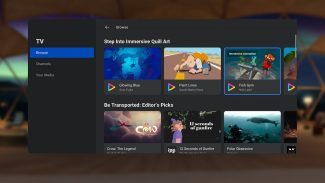
While the immersive video experience is still very fragmented on Quest, the company has made some strides toward Carmack’s vision via the Oculus TV app which lets users browse some immersive videos, and even Quill artwork, from a native Quest interface.
He also talked about the need to bring the smartphone experience into VR. “Hopefully people will be spending large amounts of time in VR and their phones are important. We need to find some way to surface that stuff in [VR].”
– – — – –
And that’s just the highlights! If you want to see Carmack’s full Oculus Connect 6 presentation, you can check it out here. Let us know what you think is being foreshadowed and what you expect to see next week at Facebook Connect.

